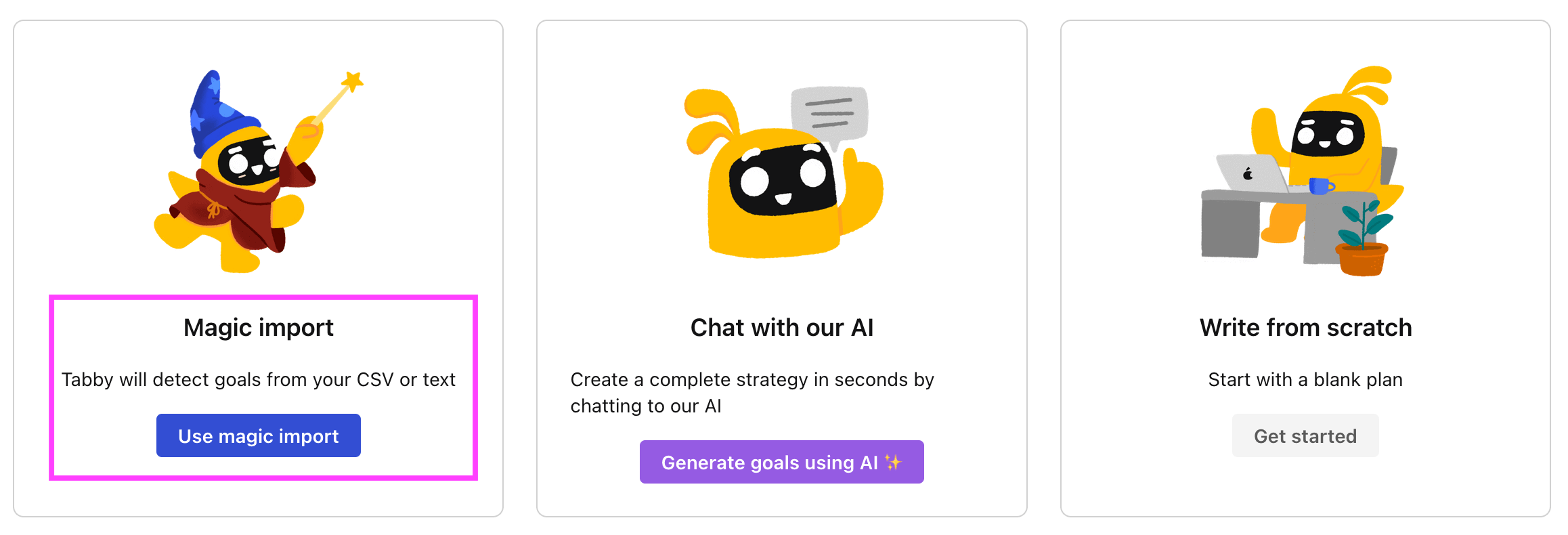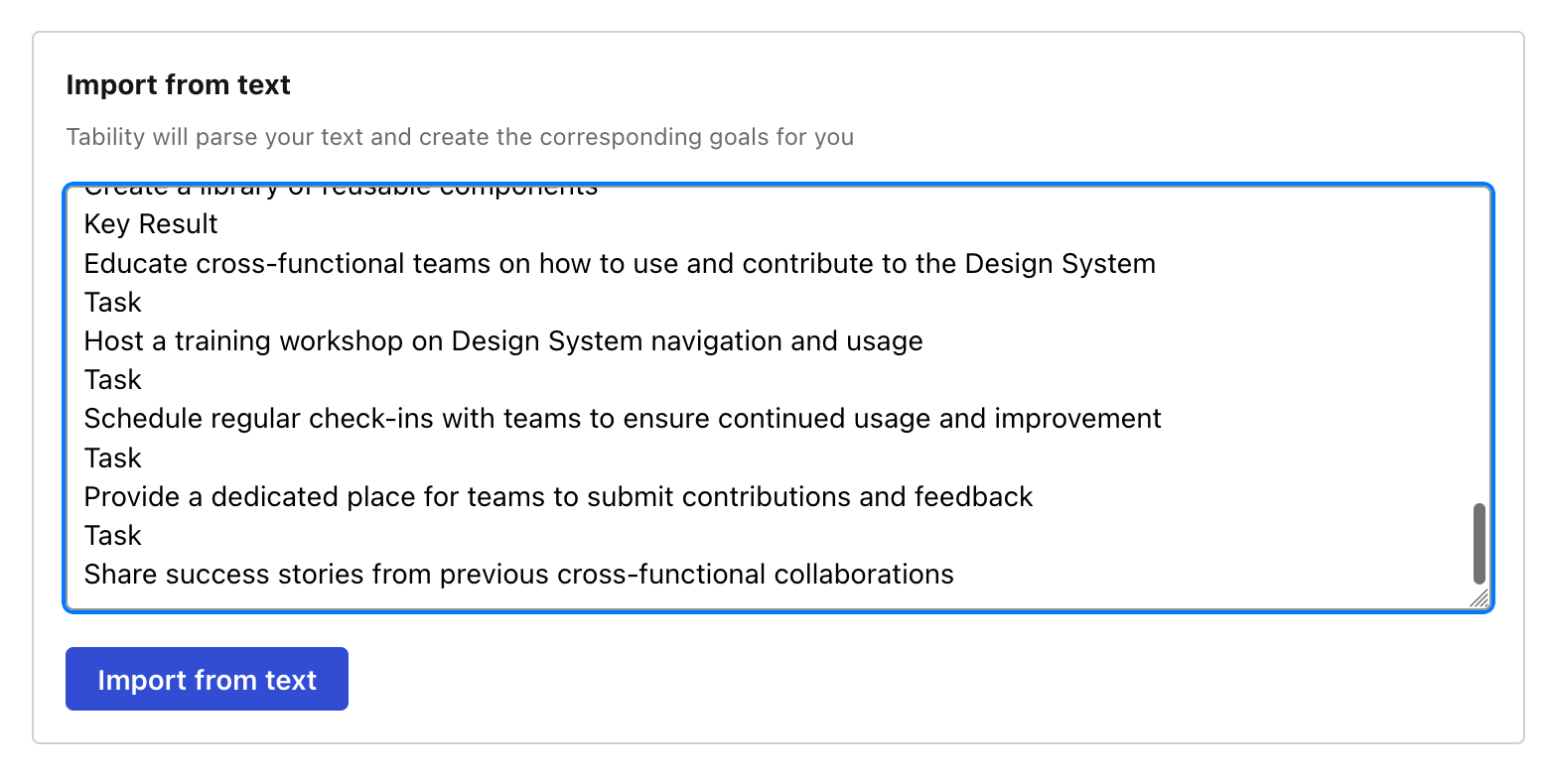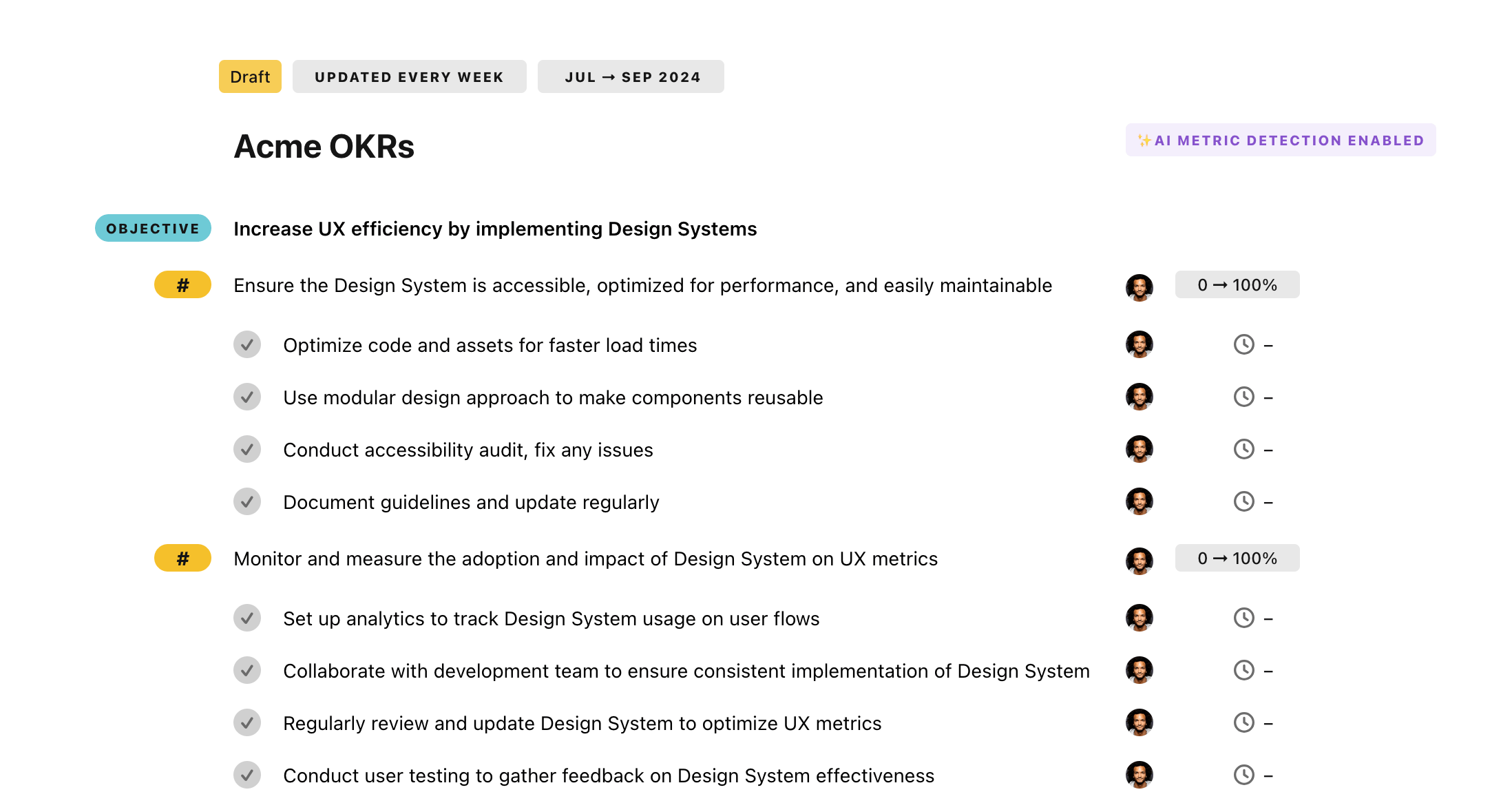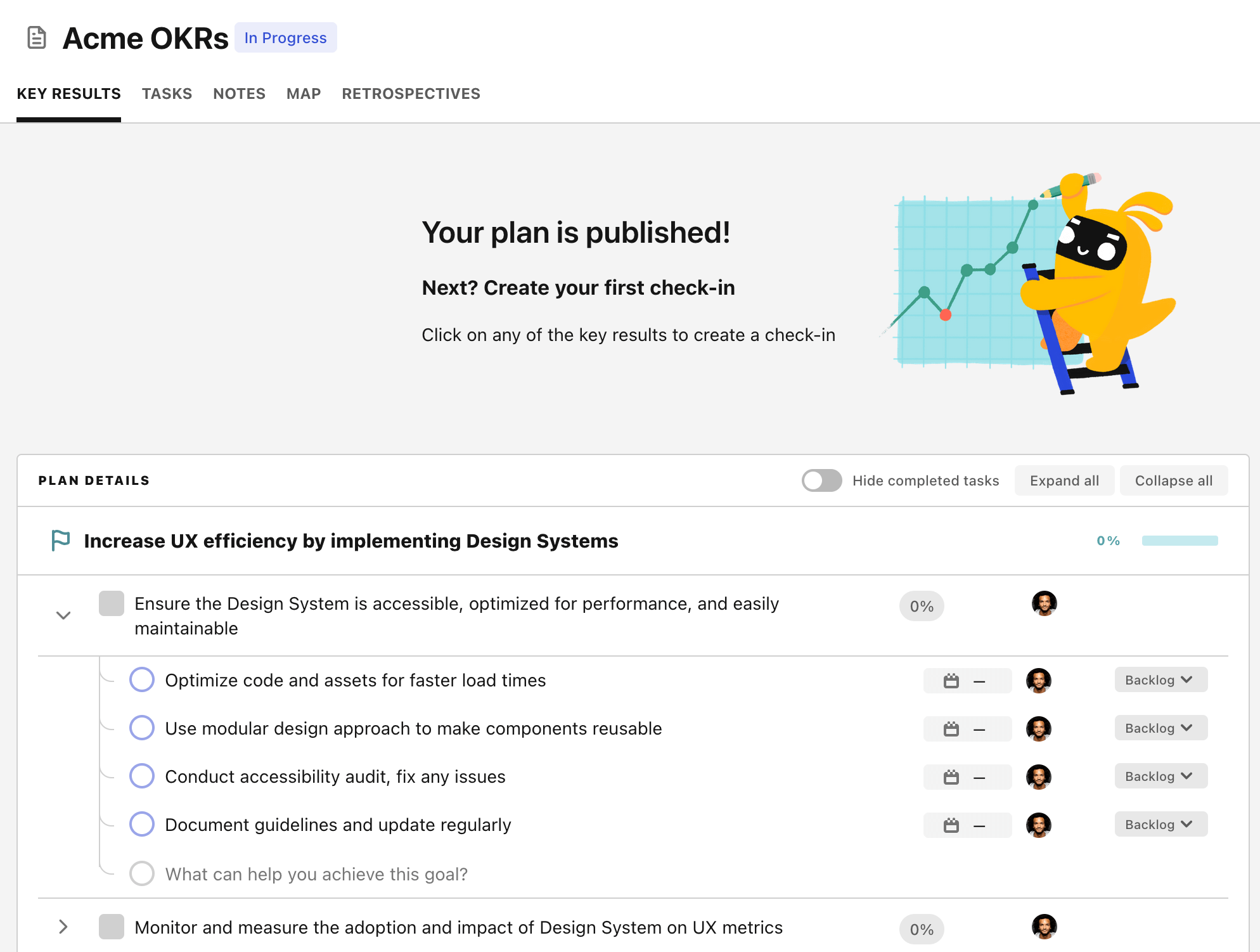OKR template to develop a comprehensive understanding of user requirements for secure document backup
Your OKR template
Moreover, it points towards presenting a detailed report of user requirements to help guide future product development. This ensures that user suggestions and preferences are documented and used in making product decisions. Initiatives such as organizing focus groups will enable interaction with different user segments, thereby gaining a broader perspective on user needs.
Overall, it's quite clear that the imperative goal here revolves around user involvement. Efforts will be directed towards extracting valuable insights from users, focusing on their issues, preferences and requirements. This will subsequently guide development and improvement processes, leading to a user-oriented product and an enhance user experience.
Furthermore, organizing focus groups with diverse user segments is a key part of understanding the nuanced requirements of different user groups. This initiative will ensure that the product is developed with a diverse user base in mind, leading to a more universally accessible and user-friendly product.
ObjectiveDevelop a comprehensive understanding of user requirements for secure document backup
KRAnalyze data from customer support logs to identify the top 3 issues faced by users regarding document backup
Compile a report highlighting the top 3 document backup issues faced by users
Identify recurring keywords or phrases associated with users' document backup problems
Collect and sort customer support logs relevant to document backup issues
Analyze the frequency and severity of each identified issue to determine their significance
KRConduct surveys to gather feedback from at least 500 users regarding their document backup preferences
Create an online survey questionnaire to gather document backup preferences from users
Analyze and summarize the survey data to compile a report on user preferences
Share the survey link through email, social media, and company newsletters
Monitor the survey responses and identify any issues or trends
KRSummarize and present user requirements in a detailed report to guide future development and improvements
Analyze and identify common patterns and trends within the user requirements
Collect user requirements through surveys, interviews, and feedback channels
Create a comprehensive and detailed report outlining the summarized user requirements for development guidance
Organize and categorize user requirements based on their importance and potential impact
KROrganize focus groups with a minimum of 3 diverse user segments to identify specific needs and pain points
Develop a structured questionnaire to gather insights on user needs and pain points
Set up a schedule and secure venue for conducting focus groups
Identify and select diverse user segments based on key demographics and characteristics
Recruit participants for each focus group and provide clear instructions for their involvement
How to edit and track OKRs with Tability
You'll probably want to edit the examples in this post, and Tability is the perfect tool for it.
Tability is an AI-powered platform that helps teams set better goals, monitor execution, and get help to achieve their objectives faster.
With Tability you can:
- Use AI to draft a complete set of OKRs in seconds
- Connect your OKRs and team goals to your project
- Automate reporting with integrations and built-in dashboard
Instead of having to copy the content of the OKR examples in a doc or spreadsheet, you can use Tability’s magic importer to start using any of the examples in this page.
The import process can be done in seconds, allowing you to edit OKRs directly in a platform that knows how to manage and track goals.
Step 1. Sign up for a free Tability account
Go tohttps://tability.app/signup and create your account (it's free!)
Step 2. Create a plan
Follow the steps after your onboarding to create your first plan, you should get to a page that looks like the picture below.

Step 3. Use the magic importer
Click on Use magic import to open up the Magic Import modal.
Now, go back to the OKR examples, and click on Copy on the example that you’d like to use.

Paste the content in the text import section. Don’t worry about the formatting, Tability’s AI will be able to parse it!

Now, just click on Import from text and let the magic happen.

Once your example is in the plan editor, you will be able to:
- Edit the objectives, key results, and tasks
- Click on the target 0 → 100% to set better target
- Use the tips and the AI to refine your goals
Step 4. Publish your plan
Once you’re done editing, you can publish your plan to switch to the goal-tracking mode.

From there you will have access to all the features that will help you and your team save hours with OKR reporting.
- 10+ built-in dashboards to visualise progress on your goals
- Weekly reminders, data connectors, and smart notifications
- 9 views to map OKRs to strategic projects
- Strategy map to align teams at scale